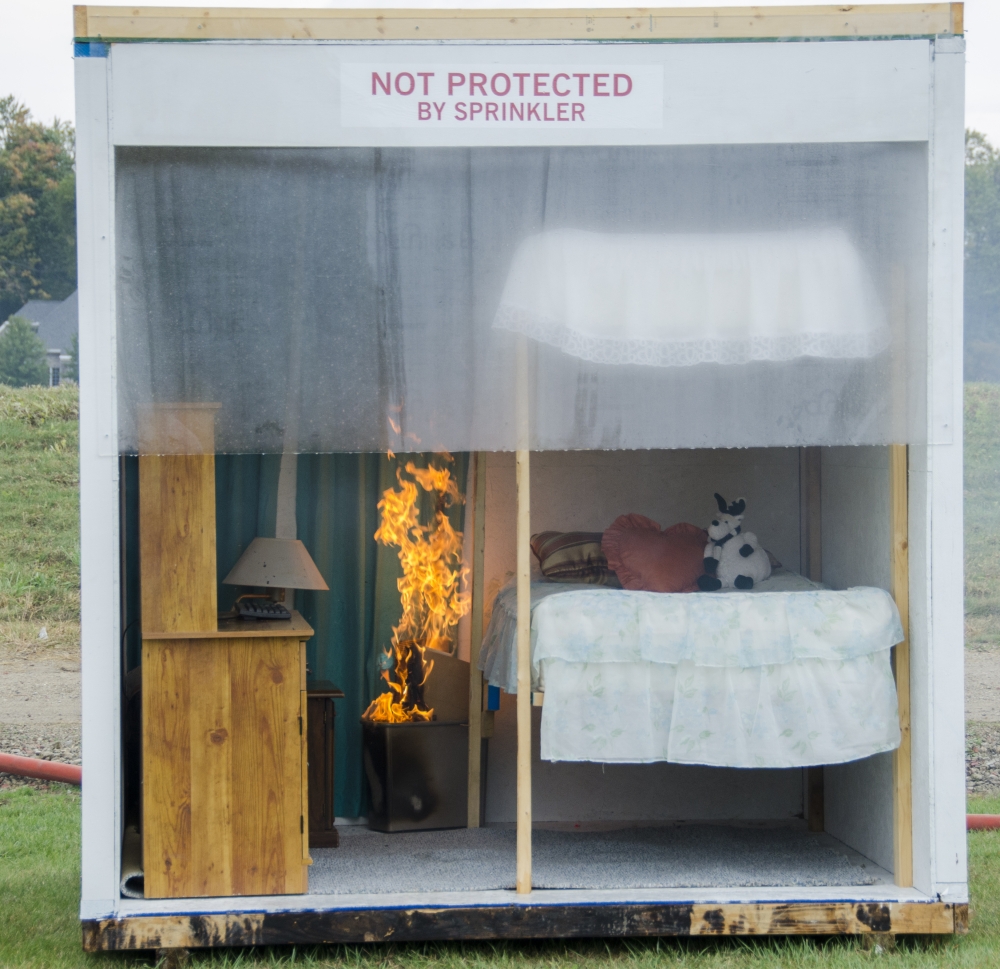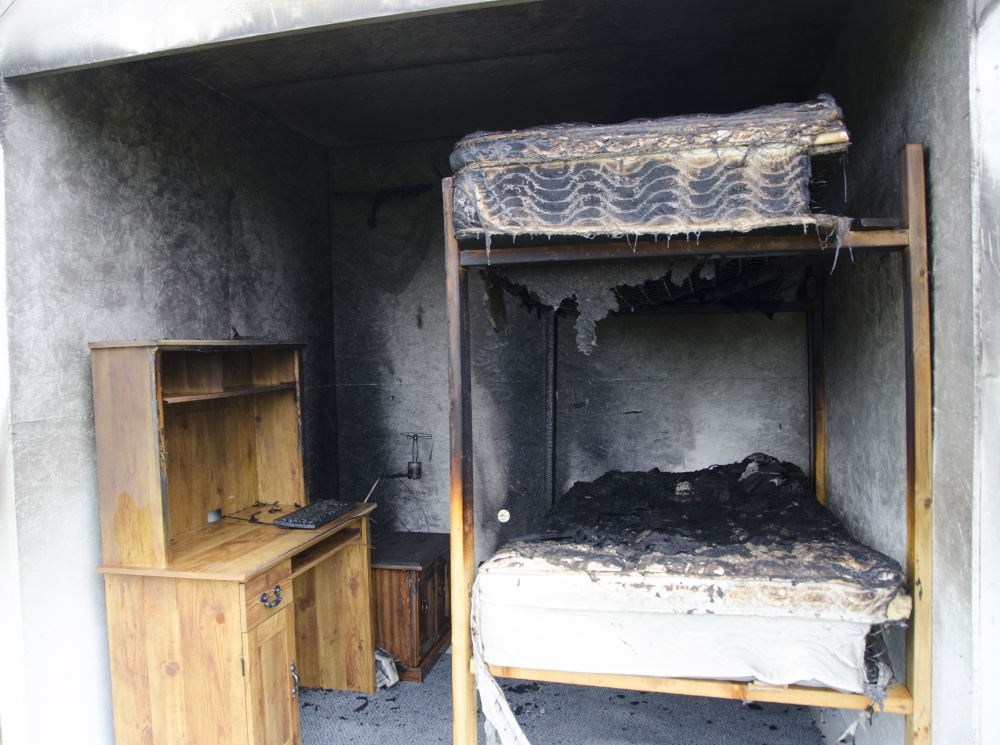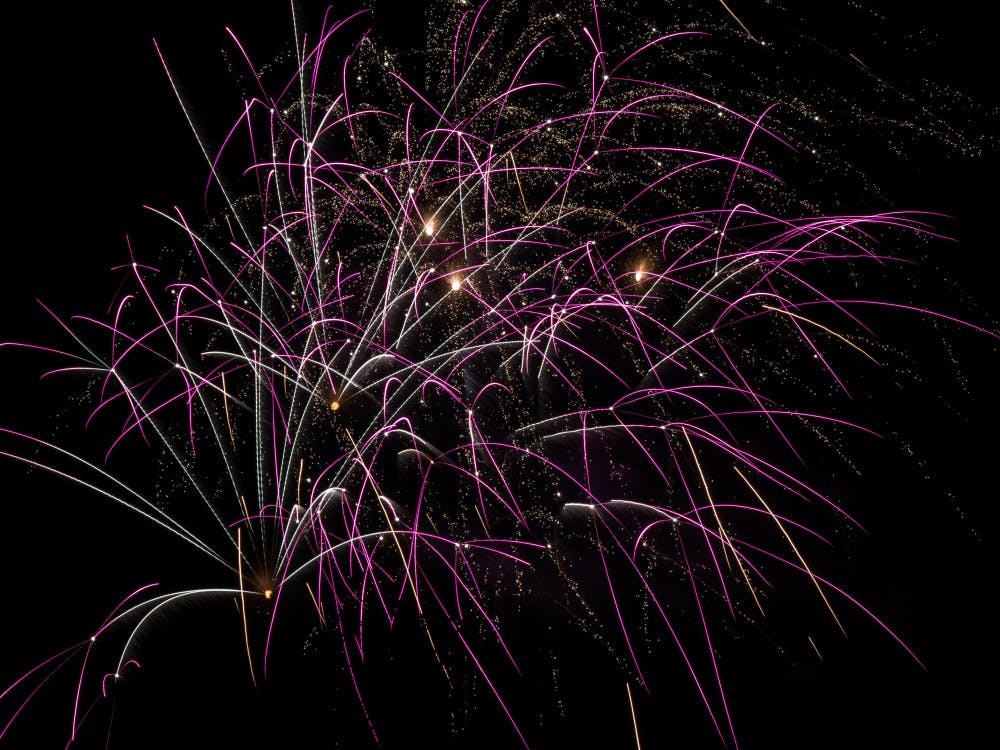A burning dorm room, billowing smoke and gallons of water usually means trouble, but for a group of 30 Ball State students, a mock arson offered a chance to put their class work to practice.
John Pichtel, a professor of natural resources and environmental management, and the students of his new arson investigation class set two fake dorm rooms on fire at Heath Farm Tuesday to practice investigating a fire.
“It is rare to get an opportunity to do something like this,” Jake Ressler, a senior disaster management and applied GIS major, said at the simulation. “Looking at ashes in a picture is far different from being covered in them.”
Ressler recently took time away from school to fight forest fires in Dulzura, Calif. He said books, photos and films of fires can only go so far, but actually fighting and investigating a real fire is priceless experience.
“It is something very different when you are getting your hands dirty,” he said.
Students took samples of material, measurements to reconstruct the room and photos to help with a potential arson investigation, as well as interviewing potential suspects. The suspects were Pichtel in different costumes, one of which he described as extremely twitchy and shady.
It wasn’t just acting though, students had to follow federal guidelines, including wearing gas masks to protect themselves from smoke and measuring every object in the room. Breaking protocol meant getting kicked off the site.
“These students have to be meticulous to a fault,” Pichtel said.
Pichtel has been fighting to teach this class for several years, he said, and was given the chance this year. He said arson investigation is important because very few arsonists are caught, and changing technology is making investigations easier. Now, he said, students need to take classes and join in the field.
Arsons are more common than most people think, Pichtel said. More than 52,000 arsons occurred in 2012 with an average dollar loss of $12,796 at each fire, according to the FBI’s uniform crime report. There were 18.7 arsons per 100,000 people in the United States in 2012.
Mitchell Sightes, a senior criminal justice major, has never had experience at a real fire, but he said what he learned at Tuesday’s event showed him the importance of his work.
“[I] didn’t know what to expect but it certainly got the point across,” he said. ”It is a lot better than sitting in a classroom for three hours.”
The fires weren’t just for Pichtel’s class, though.
The university used Tuesday’s exercise to show the importance of sprinkler systems in dorm rooms. One mock dorm room had a sprinkler system, like the ones in all but two of Ball State’s dormitory complexes, and the other was left to burn without the system and eventually Muncie fire fighters extinguished it.

|

|
Before |
After |
| Thirty Ball State students were able to use class work to practice investigation of a fire on Tuesday at Heath Farm. Students took samples of material, measurements to reconstruct the room and interviewed potential subjects. DN PHOTO CHRISTOPHER STEPHENS | |
The sprinkler system went off less than a minute after the fire started and extinguished the small blaze, leading to very little damage in the room. The dorm without the system was badly damaged - both beds were burned and the room was full of fire before officials doused the blaze.
Tim Kirby, safety specialist, said the system worked exactly as intended.
“It just puts into perspective how real it is,” he said. “Someone could have been in there, passed out, and they would have been fine.”




